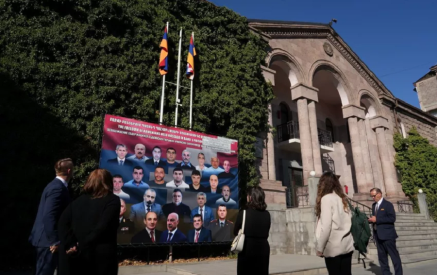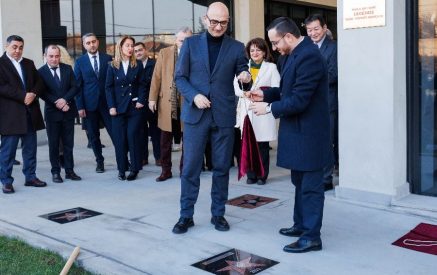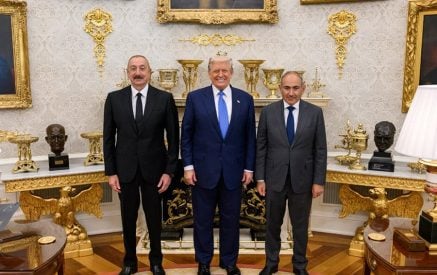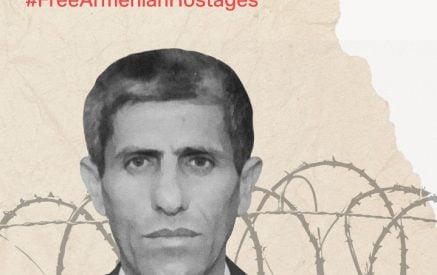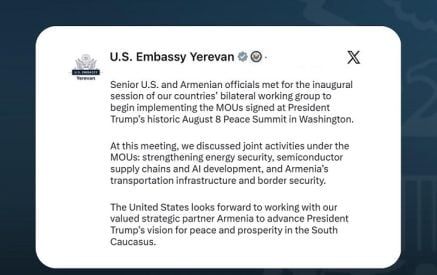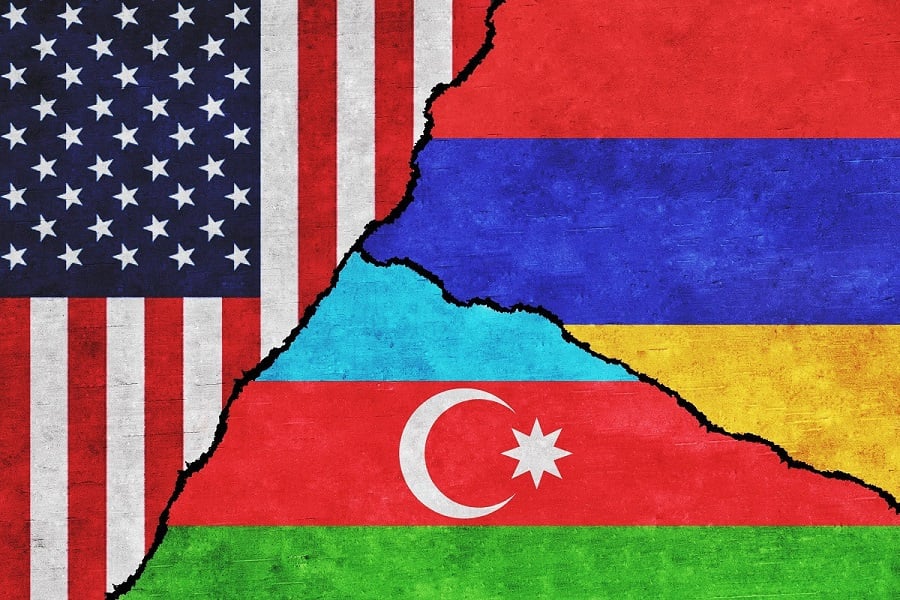In a recent article for Responsible Statecraft, policy expert Eldar Mamedov reports that U.S. President Donald Trump claimed a peace agreement between Armenia and Azerbaijan — two longtime adversaries in the South Caucasus who fought bloody wars in the 1990s and again in 2020 — was imminent. Trump credited his administration’s diplomatic efforts, stating during a dinner with Republican senators: “Armenia and Azerbaijan. We worked magic there and it’s pretty close — if not, it’s already done.”
The author goes on to note that Trump’s remarks referred to a U.S. proposal to lease a 43-kilometer road through Armenia’s southern Syunik province to an American private company for 100 years, as revealed by U.S. Ambassador to Turkey Thomas Barrack. The plan is presented as a creative workaround to the deadlock over Baku’s demand for the so-called Zangezur corridor — a land route through Armenian territory that would link Azerbaijan to its Nakhichevan exclave and on to Turkey. Under U.S. management, the logic goes, all sides could share the route and move beyond the “tribal viewpoints” that have fueled the conflict.
Yet, reactions in both Armenia and Azerbaijan have been tepid — despite the fact that both countries are actively seeking to reduce Russia’s influence in the region, which should, in theory, make them more receptive to U.S. involvement.
The core sticking point remains sovereignty. Armenian Prime Minister Nikol Pashinyan has emphasized that Armenia must retain full control over the route. At the same time, Azerbaijani President Ilham Aliyev — speaking in Khankendi/Stepanakert (the former capital of the now-dissolved Nagorno-Karabakh Republic, from which the indigenous Armenian population was violently expelled in 2023) — insisted on unilateral access to Nakhichevan and Turkey, rejecting any foreign presence. “There will be no operators, no leases, no rentals on our territory,” he stated, in a thinly veiled rebuke to Washington.
Read also
Given Aliyev’s earlier claims that Syunik is “ancient Azerbaijani land” and his repeated threats to seize it by force, Armenia views Baku’s demands as a likely precursor to annexation.
Still, Aliyev praised Trump’s “vision and efforts to promote peace” after the former U.S. president shared a video clip of his remarks on Truth Social — a move interpreted as an attempt to flatter Trump and gain favor in Washington.
Complicating matters further is the corridor’s location along the Iranian border. Tehran has fiercely opposed any extraterritorial arrangement, fearing it would sever its direct link with Armenia, bolster Turkish-Azerbaijani influence, and leave its trade routes to Russia and Europe vulnerable to Azerbaijani control.
Adding to Tehran’s concern is Azerbaijan’s close military cooperation with Israel and unconfirmed suspicions that Israeli drones may have entered Iranian airspace via Azerbaijan during a 12-day war last month — an allegation Baku strongly denies. Iran also accuses Azerbaijan and Israel of encouraging separatist sentiment among its own ethnic Azeri population. Notably, Brenda Shaffer — a senior fellow at the Washington-based neoconservative Foundation for Defense of Democracies and a vocal supporter of Azerbaijani irredentism — has framed the Armenia-Azerbaijan peace process largely as a way to isolate Iran and build a “NATO corridor” stretching from Turkey to Central Asia.
Given ongoing U.S. support for Israeli strikes on Iran and its role in sabotaging Iranian nuclear infrastructure, the prospect of an American-controlled corridor near its border only deepens Tehran’s fears of strategic encirclement. Even in its weakened state, Iran still possesses the leverage to derail any arrangement it views as a threat to its core interests.
In an apparent move to ease Iranian anxieties, Aliyev accused — without providing evidence — the EU’s Armenia border mission of spying on Iran, signaling alignment with Tehran’s stance against outside interference. This came even as Armenia itself continues to pivot toward the West, seeking deeper ties with both the U.S. and EU.
Russia, like Iran, sees the U.S. proposal as a direct attempt to displace it from the South Caucasus — a perception Yerevan appears to be encouraging. Still, Moscow retains significant influence: it guards Armenia’s border with Iran, operates a military base within Armenia, and maintains dominance over several key sectors of its economy and infrastructure. Yerevan’s Western pivot, while symbolically important, remains largely rhetorical so far. Critical questions remain: How would Russian border troops coexist with an American-operated corridor? Would the U.S. be willing to send forces to protect the route, potentially risking a confrontation with Russian troops on Armenian soil? And does Washington have the long-term commitment or strategic interest to sustain such a presence in a region of limited geopolitical value?
While a U.S.-brokered peace between Armenia and Azerbaijan is desirable in principle, Mamedov concludes that the current proposal oversimplifies a highly complex regional landscape. At best, it is an early draft that requires intensive, inclusive negotiations with all regional stakeholders, including Iran and Russia. At worst, it risks being dismissed as yet another headline-seeking gesture in Trump’s ongoing pursuit of a Nobel Peace Prize.



